Advanced Micro Devices said on Tuesday that it will release new products that will help it to regain share on the markets of central processing units (CPUs) and graphics processing units (GPUs) starting in the second quarter 2015 and going into the second half of the year. The comments from AMD confirm rumours that AMD intends to release “Carrizo” APUs as well as new Radeon graphics cards in the Q2 2015. Unfortunately, the Q1 2015 will be tough for AMD as the company is on-track to report its lowest quarterly revenue in more than a decade.
“Going into the second quarter and the second half of the year with our new product launches, I think we feel very good about where we are positioned there,” said Lisa Su, chief executive officer of AMD, during a conference call with investors and financial analysts. “Commercial will definitely be important, as well as improving our overall mix.”
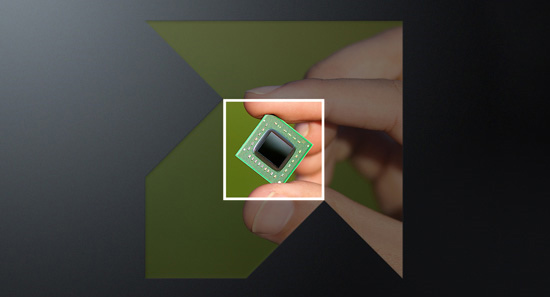
New APUs and CPUs
AMD stressed that it is on-track to release its highly-anticipated code-named “Carrizo” APUs for notebooks and all-in-one desktops already in the second quarter, 2015. Previously it was reported that the “Carrizo” chips would hit the market only in the late Q2 or even Q3 2015. Apparently, the company has reconsidered its plans and is now on-track to launch its new chip that it pins a lot of hopes on rather earlier than later. It remains unknown when the company intends to launch its code-named “Carrizo-L” chip commercially, but given the fact that this APU is easier to make and is less advanced than the fully-fledged “Carrizo”, it should be relatively easy for AMD to release it on time.
“We are enthusiastic about our Carrizo launch that will take place in the second quarter,” said Ms. Su.
Sometimes in the second quarter of the year AMD is also expected to release new APUs for desktops, which are currently known as the “Kaveri Refresh”. The new chips will operate at higher clock-rates than the currently available “Kaveri” and will increase performance of AMD’s APUs a bit. Given the fact that AMD’s current-generation desktop platforms are considerably behind Intel’s offerings both in terms of performance and feature-set, it is unlikely that it will be easy for AMD to win market share in traditional desktops using the “Kaveri Refresh” line.
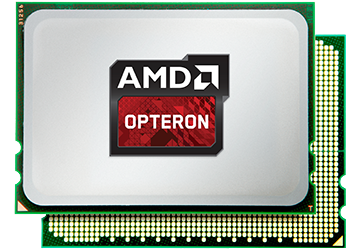
In addition, AMD is projected to release its long-awaited ARMv8-based AMD Opteron “Seattle” processors featuring up to eight ARM Cortex-A57 cores and designed for ultra-dense server market. Do not expect the chip to revive sales of AMD, but it will still improve its bottom line.
“We will see production shipments [of AMD Opteron ‘Seattle'] in 2015,” said the chief executive officer of AMD. “But primarily we have seen a lot of ecosystem partners spending quite a bit of time on the software on our silicon.”
New GPUs incoming
AMD is also expected to release all-new graphics processing units starting the Q2 2015. It is believed that the first new GPU to be released by AMD this year will be the company’s new flagship graphics adapter currently known as the Radeon R9 380X, which will feature 4096 stream processors and 4GB of stacked high-bandwidth memory (HBM) with unprecedented bandwidth.
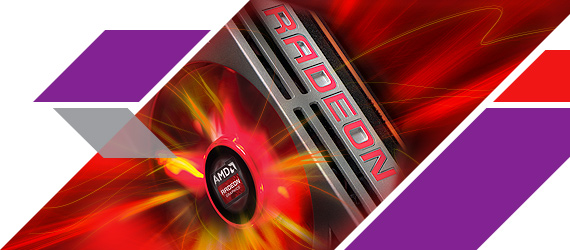
Another new offering from AMD is rumoured to be code-named “Trinidad”, which is designed for the mainstream market and will replace the AMD Radeon R9 270-series “Curacao” graphics processor. The “Trinidad” graphics chip will likely sport 1280 or more stream processors to deliver new levels of performance to the market segment.
Based on unofficial information, AMD’s new graphics products family is code-named “Caribbean Islands”, it will be based on the GCN 1.2 architecture and will feature a number of new multimedia and video playback technologies.
Worst quarter in over a decade?
Even though it is tremendously important for AMD to release new CPU and GPU products to boost sales and regain market share, the company will not rush new offerings to the market. AMD’s partners in the channel still have a lot of old inventory in stock and introduction of new products will not necessarily improve AMD’s positions, but will rather force it to sell them at relatively low prices to make them attractive to resellers. Therefore, in the first quarter of 2015 the company will continue to “improve channel health” and get rid of old products that are still available on the market.
“From Q1 to Q2, I think the largest improvement will be around the channel health,” said Lisa Su. “We have had this channel problem for a couple of quarters, and it is important for us to correct that. We definitely reduced some inventory in Q4, and we will take significant action to reduce that inventory in Q1, and that will give us an opportunity to return to a more normal desktop channel business.”
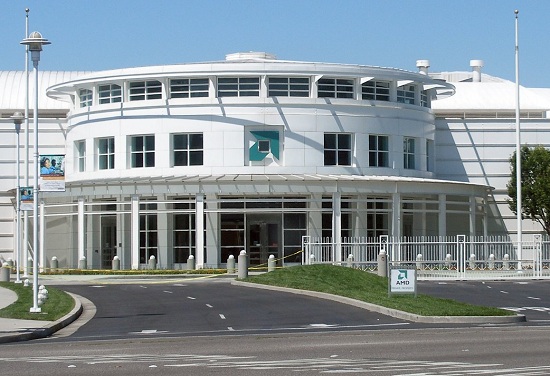
Since AMD sees necessity to reduce inventory in the Q1 2015 as its main task for the quarter, financial woes for the company will continue in the next several months. AMD expects its revenue in Q1 2015 to decrease 15 per cent sequentially (±3 per cent) to around $1.054 billion, a decline of 24.7 per cent from the same period a year ago. If AMD’s revenue drops to levels below $1.09 billion, then it will be AMD’s lowest quarter revenue in about ten years. Major decreases of revenue affect AMD's ability to invest in research and development as well as marketing.
For the Q4 2014 the company reported revenue of $1.24 billion, down 13 per cent sequentially. Computing and Graphics segment revenue was $662 million, down 15 per cent from Q3 2014, primarily due to lower desktop processor and GPU sales. Enterprise, Embedded and Semi-Custom segment revenue was $577 million down 11 per cent sequentially, primarily due to seasonally lower semi-custom SoC sales. The company’s gross margin was 34 per cent, the net loss of AMD in the Q4 2014 was $364 million.
Discuss on our Facebook page, HERE.
KitGuru Says: As usual, AMD is talking about future products as a way to improve its revenue and profitability. While it is possible that the company will improve its results this year because of lower costs or other factors, it should be noted that AMD publicly said last November and December that its major return to the market will occur in 2016, when it rolls-out its brand-new CPUs, APUs and GPUs based on all-new Zen, K12 and post-GCN architectures.
 KitGuru KitGuru.net – Tech News | Hardware News | Hardware Reviews | IOS | Mobile | Gaming | Graphics Cards
KitGuru KitGuru.net – Tech News | Hardware News | Hardware Reviews | IOS | Mobile | Gaming | Graphics Cards



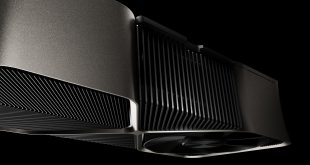
so ALL THE rumors about the new GPU,in the end was about a 380X ?
And the 390X? only with 16nm?
kind strange, cause AMD just changed its nomenclature last year, and now they will not follow it? ( in case the 380X is in fact the top tier GPU of them)
Kaveri Refresh?
Unless yields have significantly improved since the release of the A10-7800, these “higher” clock rates aren’t going to end well. Especially not on boards like the A88X-ITX with perilous VRMs.
And they’re not going to mean anything unless AMD has removed the 3GHz-while-iGPU-under-load throttling limitation of the A10-7850K.
The last AMD computer that I was excited about building was back at the start of 2008, when I put together a set up with a 9950, duel 3870’s, 4 gigs of high speed DDR2 RAM, A cooler that looked like a sky scraper, and a case that could put you into outer space. It wasn’t the highest performing rig around but it did anything I wanted it to do and it did it pretty well–and it moped the floor with my old Athlon 64.
I figured it would hold me over for a few years until they introduced a new and improved architecture, DDR3 became the norm, and Crossfire had all the kinks worked out; that never really panned out, my next purchase was a laptop and I eventually retired the machine when the HDD crashed in 2012 (the year I had originally intended to upgrade my system to something better).
Problem was, AMD hadn’t really introduced anything that was truly better, at least not from a CPU standpoint, like I had expected. I was traveling a fair bit at that point and decided it wasn’t really worth it to pump a bunch of money into a gaming rig that wasn’t pushing any new boundaries, so I bought an A-8 based rig that I upgraded with a R7-260x at the beginning of 2014, and all for under $500 dollars–which has so far met my desktop and gaming needs, mostly.
The problem is, although I got better performance from a $500 machine than I saw in my older (much more expensive) rig, there still isn’t really much of a reason to upgrade my machine to something higher end, because AMD still hasn’t released anything that really makes it worth it–not unless you want to go Intel.
It’s been seven years since I have really been able to upgrade to anything the felt like a major leap forward and AMD is still saying the same thing today that it was years ago, “next year will be different.” Seven years!
I don’t want a mammoth chip that sucks down more electricity than it takes to light my entire house, AMD. Sure, the price may be lower than the competition, but how fast does that savings evaporate when you have to take out a mortgage to subsidize its operation? I want faster, smaller, and far more efficient, and I know it is possible to do it, because other companies are doing just that.
Where’s the excitement, AMD? Where’s the enthusiasm that you used to inspire in your fan base? And most importantly, where are the improvements that you have been talking about for so many years?
Honestly, I can’t take another cycle of letdowns. We have a whole new generation of gaming coming out and with it a reason to upgrade to something a little higher end, bit if they don’t introduce something that is downright revolutionary over current products, something that is truly makes me want to plunk down some serious change on a high end rig, then I’m jumping ship. And I think even AMD has to admit that I gave them more than a fair chance. I mean we have been buds since the 90s, but it is starting to feel like one of those relationships with someone with a substance abuse problem: they keep saying they are going to better themselves, but instead they run up your electric bill and try to milk you for cash every time they sober up long enough to do something decent for themselves, like they deserve special attention for doing the things that everyone else on the block is already doing. I mean eventually you get fed up with it and kick em’ to the curb, right?
There is no 16nm dGPU for AMD, it’s 14nm they are working on. 390X is a press assumption. 380X is the only known confirmation so far. 390X can be reserved for a dual GPU single PCB solution.
can’t wait for the new 380X, I Need a new GPU but i also want to wait for AMDs turn
At least on the topic of power consumption, you should really watch this.
https://www.youtube.com/watch?v=fBeeGHozSY0
Hi, thanks for sharing that video, it was very interesting
and informative. Unfortunately, it wasn’t really relevant to the point that I
was trying to make. I wasn’t trying to make an Intel Vs AMD argument, I was
making a cheap joke about overall efficiency. If your video proved anything, it
is that cost and efficiency can be a big deal when we are talking about a
heavily used device.
For example, the desktop in my household gets a lot of heavy
usage. At any given time someone in my family (or a friend) is using it (for
movies, television, gaming, work, school, etc.). Sometimes it is running darn
near 24/7. Using the information provided in the video you posted and assuming
an overall rate of a 50% load at an average of 16 hours a day, it would cost me
100 to 150 (if over clocked) dollars a year to operate that CPU; or anywhere
from 400 to 900 dollars over the life of the machine (given the 4-5 year
upgrade cycle I provided in my first comment). It might not mean that much to
the guy in the video, but to me that is a nice chunk of change just to run a
computer. If they doubled their efficiency it would halve this cost and leave
me with a few hundred extra bucks to put into savings or to spend on something
else (like my new computer!) and that sounds awesome.
Now for the Intel rant comparison rant, even though that wasn’t my point: Right now, I can get an Intel part that hits the same performance (in most usage situations) as the 8350 that
uses less than half the power of that part, giving me that savings, but I haven’t
taken that route and don’t want to (I have Intel components in some of my
devices, I’m not some kind of fan boy fanatic, just so you know, but I like
using AMD in my desktop builds. Competition is good and I feel AMD has a better
ecosystem and business culture).
I feel this way about GPU efficiency as well, because adding
in a massive card(s) can double or triple the cost of operation, so increases
in performance per watt can have a tremendous effect on the cost of running
that part.
Honestly, I want to balance the performance of my machine
with the cost of operation in a way that is (kind of) environmentally friendly.
This means using parts that meet my needs, but aren’t overkill or expensive to operate.
Know what I mean? AMD has huge potential for improvement in this area and when
I do finally decide to upgrade to something more updated (for the next
generation of gaming), I want to see these improvements, otherwise, I will go
with Intel so that I am getting both a performance increase over what I already
have and I’m saving money over the life of the computer. It would be nice to
keep low power draw and still be able to dive into some of the really beautiful
next gen games in all their glory! That is what I am aiming to do and that is
what I am hoping AMD provides in their next major platform update.
Jesus Christ! Q2???? I want cards NOW!
amd bancrupt!
ba bye baby
i cant wait to see how intel gonna rape us
Too much stock they say?
No one, nobody is putting a knife under AMD’s throat and tell them to keep pricing as is.
For instance, in spite of wonderful results my R9 280x offers, I cannot stop and wonder why the price remains as is, if not went up a notch at retail while we see a cesspool of old gpusof any/many brand and manufacturer all combined and poor performance take a rise in retail store. I assume amd target market can’t survive that way.
Although, I am interested in this next APU specs
I think I know what you mean. They still don’t have a chip set to go with their FX processors to support pcie3. I think they use to be innovators. Now they can barely pick up an expired patent from other companies. But really, it’s other companies that build their stuff anyway. Of they approve, they also their name on it. (Ex.: FreeSync).
I still love them and just bought a bunch of pieces to build a full AMD PC. Why?
Will Carrizo support DDR4 memory?